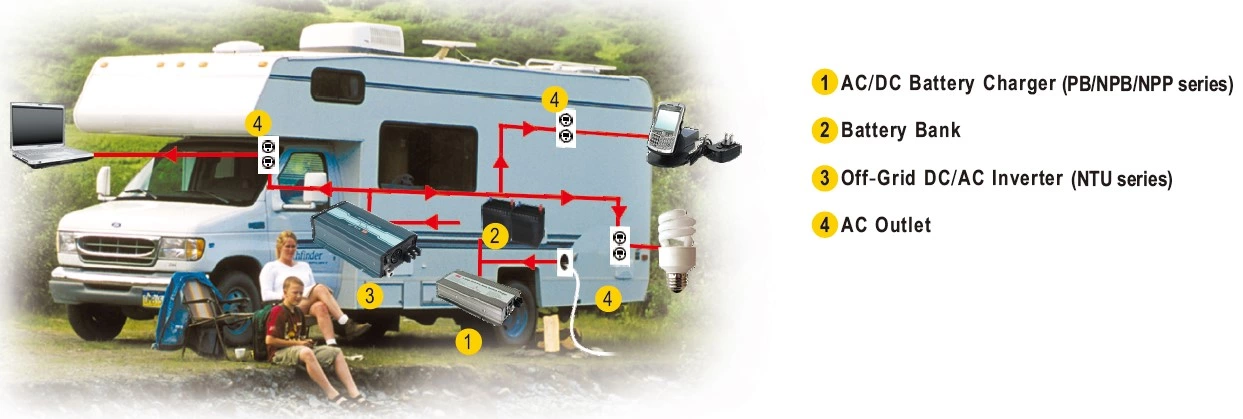Application of Charger and Inverter
Since alternating current(AC) has always played an inevitable role nowadays, however for certain areas, they can only use fuel generators to meet the demand if they do not have AC power. The generators are noisy and pollutant, with the emergence of global climate change, the awareness of carbon emissions and ecology have become an internationally significant issue. In the future, the application of renewable energy such as solar and wind will expand the DC-AC instrument will play an important role.
MEAN WELL announce new inverter NTS/NTU series and new charger NPB series. Not only does it solve the problems for those areas without AC, but it can also be used as a primary UPS backup power supply to improve the overall system's stability.
The NTS/NTU series is a pure sine wave output inverter. The AC output voltage, frequency and power-saving mode can be selected through the DIP switch on the panel, and there are various AC sockets to choose from, which can meet the world's needs. The product provides input under-voltage, over-voltage alarm and shutdown protection to prevent the battery from over-discharge. The RJ-11 communication port enables the status monitoring of the inverter's battery voltage and output voltage, which can expand the related functions to the system level.
Description of key features and related applications are as follow
【Setting of output voltage, frequency, power-saving mode】
Users could use the DIP switch to set the output voltage, frequency, and power-saving mode. Please refer to Table 1 for the setting options. The power-saving way turns off the output power under extremely light load conditions to reduce battery loss. It is recommended that emergency power applications such as medical care—non-power saving mode ensure that the system can work continuously. The factory setting is 110Vac/60Hz or 230Vac/50Hz, plus non-power saving mode.
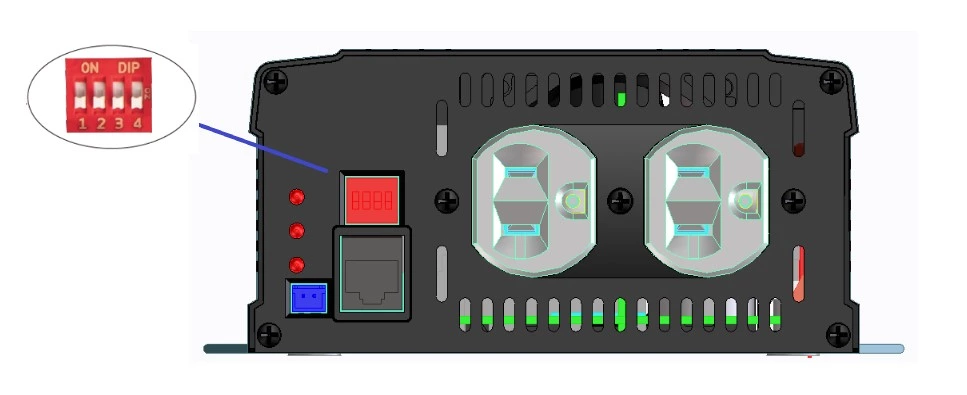
Figure 1 Position of the DIP switch
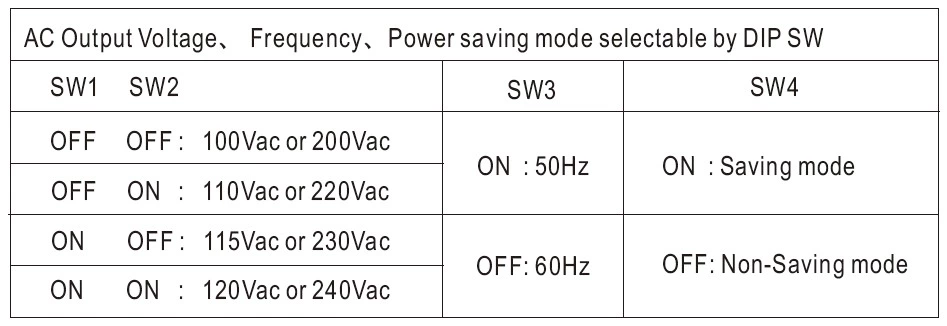
【AC sockets】
Table 2 indicates the different AC sockets and the safety for the corresponding region.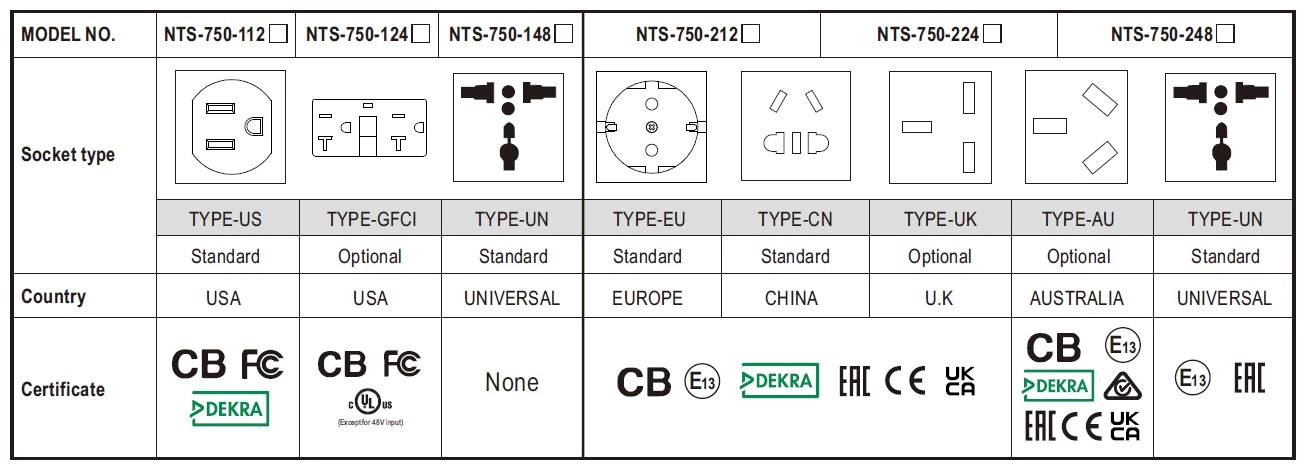
【RS-232 Communication】
As shown in figure 2, the inverter's status can be monitored by PC through the communication line between RS-232 and RJ11.

NPB series is a complete product line with a wide output range: 2 stages or 3 stage charging curves can be selected. The potential meters built externally can regulate the charging voltage and current needed to meet the demand for various batteries.
【Setting for charging curve, charging voltage and charging current 】
As shown in figure 3 and figure 4, 2 stages or 3 stage charging curves can be select through a DIP switch, and the factory setting is three stages. On the other hand, the voltage and current can be adjusted by Vo Adj and Io Adj.
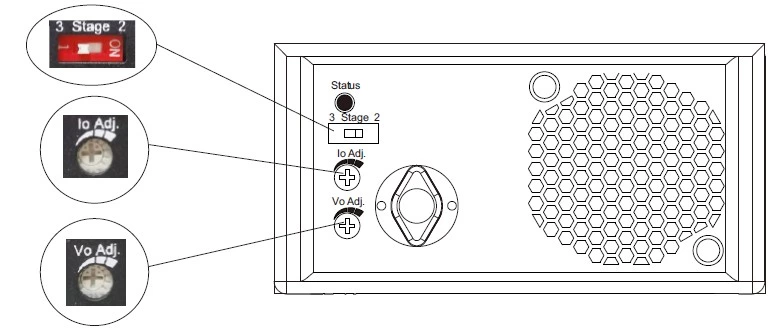

The combination of NPB + NTS/NTU makes a perfect solution for areas with unstable AC power or places where the medical or emergency power source is needed.
Few cases are shown in the following paragraph.
Application 1: Household power system
Configuration: NPB-360-48+NTS-1200-148+battery packs + solar charger
As shown in Figure 5, it is applied to the household power system as an example. When the mains power supply is up-running, all household appliances use mains power for operation, and at the same time, the NPB charger can charge the battery from AC. Once there is a short power outage, the energy stored in the battery can be converted by NTS -1200 to generate alternating current to maintain the operation of household appliances for a certain period of time. If the house is equipped with solar panels, this household power system can convert solar energy into direct current through the solar panels on the roof during the day, which is used to charge the battery. After losing the source of solar energy at night, the energy stored in the battery can be converted to AC power through the inverter to meet the night use of household appliances. The entire smart power supply system is energy-saving and environmentally friendly.
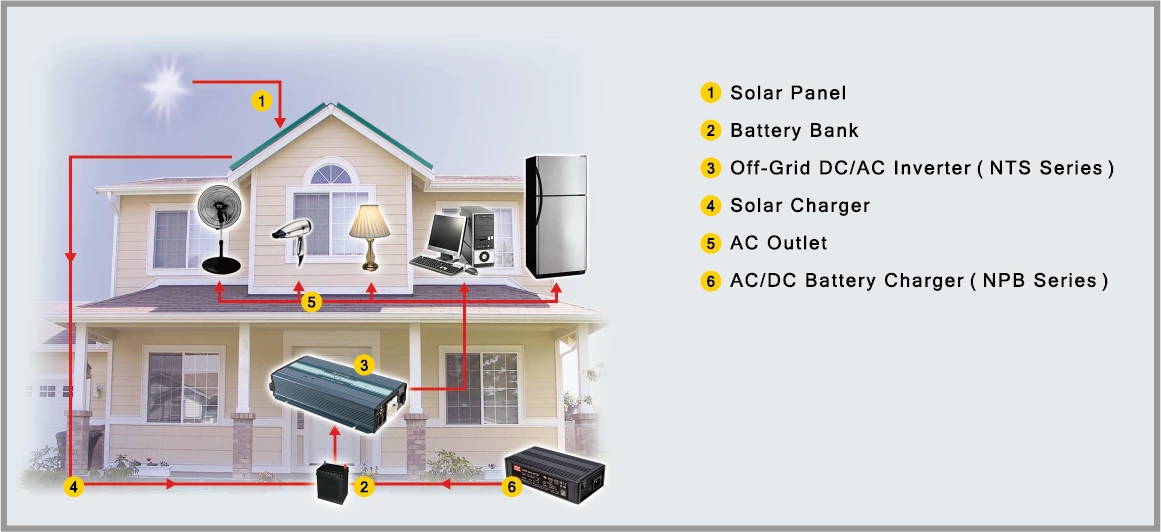
Application 2: Smart security system
Configuration: NPB-360-12+NTU-1200-112+battery packs
As shown in Figure 6, it is applied to a smart security system as an example. A battery-based UPS system is often used as a backup power supply for small telecommunications and monitoring systems. The system is usually composed of batteries, inverters, chargers... and other components. When the mains power supply is normal, the NTU-1200 will supply power to the back-end security equipment directly. At the same time, the NPB-360 charger is able to charge the battery pack of the system. Once the mains power is interrupted or fails, the power supply system composed of NTU-1200 can deliver AC power within 10ms to ensure the operation of the entire security system and improve the overall reliability of the security system.
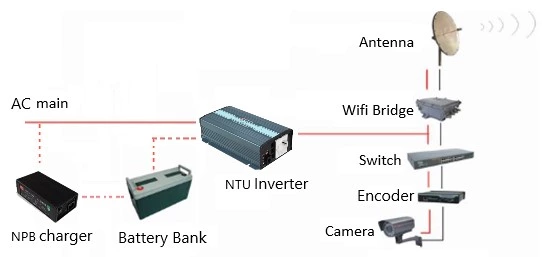
Application 3: Application of inverter in the camper
NPB-360-12+NTU-1200-112+battery packs
As shown in Figure 7, the NPB-360+battery pack+NTU-1200 is configured on the camper and equipped with an AC input plug. The AC input plug can provide a direct AC power supply (bypass) for the charger to charge the battery. If the camper is parked in a camp with an AC socket, the user can directly plug in the AC plug of the camper. At this time, the power of the equipment connected to the NTU-1200 on the camper will be supplied by the mains directly, when the camper is out for places with no AC power or the vehicle is moving, the power of the equipment on the camper is transferred from the battery to the NTU-1200.
